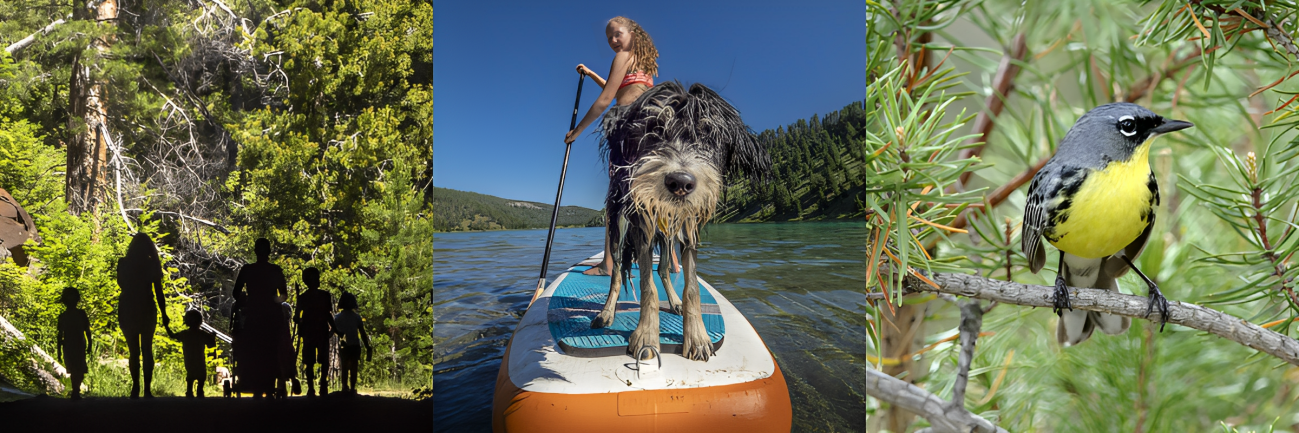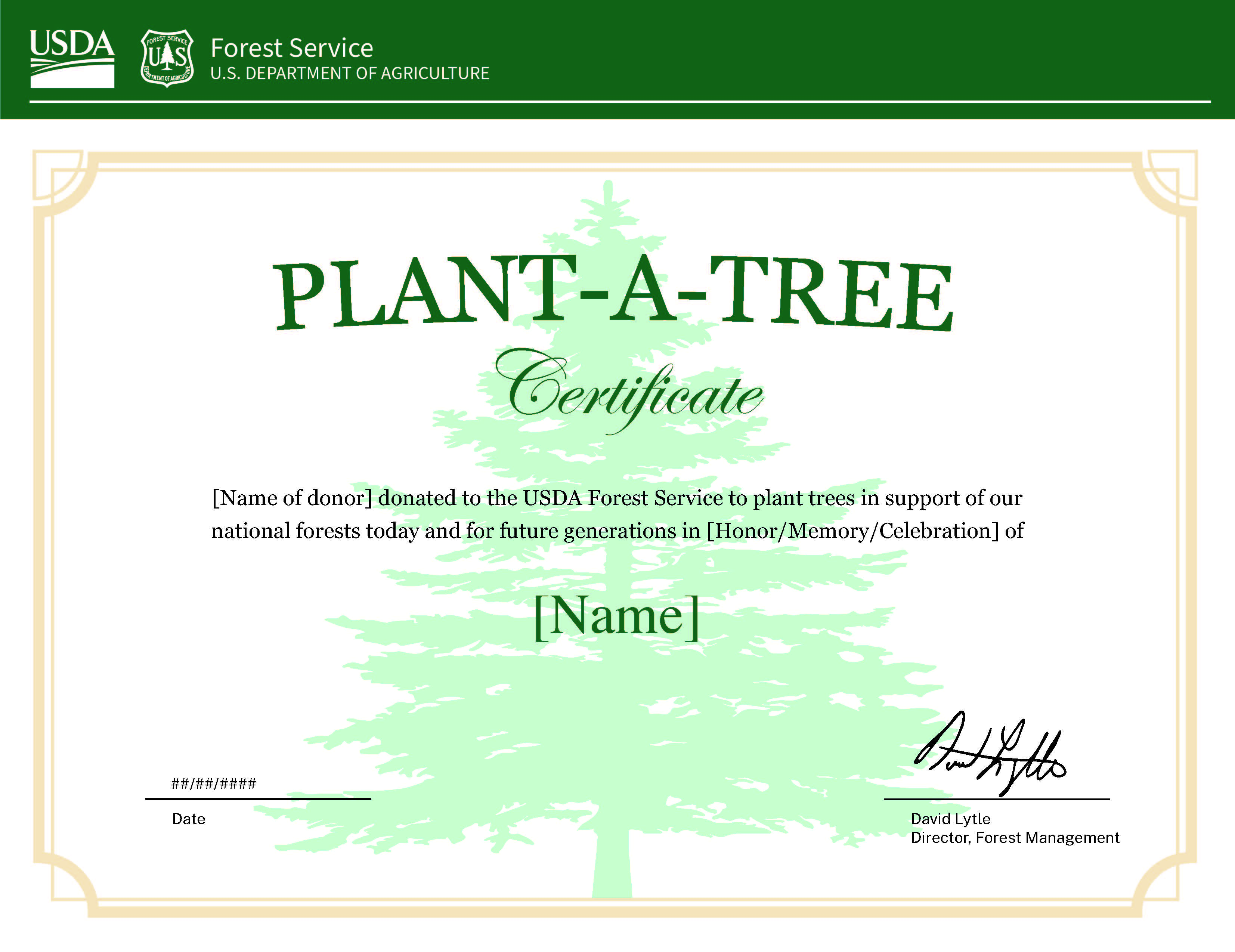Planting trees on our national forests
Since 1983, the Forest Service Plant-A-Tree program has allowed for individual donations to be used for reforestation projects across the National Forest System. Your gift of trees helps to reforest public lands that will be enjoyed by generations to come.
Why does the Forest Service plant trees?
Healthy forests offer broad benefits—from endless recreational opportunities to diverse wildlife habitats—and fulfill our most basic human needs such as food, clean air and water, and wood to build and heat our homes. The national forest system supports all these uses. However, since the 1990s, the U.S. has experienced records for drought, extreme temperatures, flooding, catastrophic wildfire, wind events, and insect and disease outbreaks leading to increased forest disturbance events.
The Forest Service plants trees where the greatest reforestation needs exist in areas of the national forest system lands impacted by these disturbances. In these locations it is unlikely the area will reforest on its own or it will take decades to return to forest. For example, sometimes wildfires burn with such intensity that they eliminate the trees with seed sources to naturally reforest the fire area. Forest Service tree planting efforts ensure new seedlings are established to grow into future forests.
Seedlings planted with your donations become part of the national forest system and provide many benefits for the American public including:
- • Carbon capture
- • Clean air and water
- • Wildlife & biodiversity
- • Future forest products
- • Recreation and scenic beauty
- • Sustained way of life and cultural traditions

Plant-A-Tree Certificate
In recognition of your donation, an optional customizable Plant-A-Tree certificate can be sent to you or to another person named by you. You can choose from three styles of certificates and select to have the certificate honor, memorialize, or celebrate a loved one.

Use of Donations
Donations to Plant-A-Tree will be used to plant trees on national forests throughout the U.S. and territories. You can select to have your donation go to where it’s needed most or to a specific national forest. Donations to where it’s needed most are received in the national office over the course of the year and are pooled and distributed annually to reforestation projects at various locations in the national forest system. Donations sent directly to a national forest will be utilized when there is a reforestation need there. If there is no tree planting need for the selected forest, the donation may be used for tree planting on another forest. The cost of seedlings varies based on location, tree species, and type of seedling (bareroot or containerized seedlings).
Planted trees will not be individually identified but will become part of the national forest system and be cared for as part of normal forest management activities.
How are reforestation projects developed?
The Forest Service takes care of 154 national forests and grasslands that total 193 million acres across the United States and territories. These areas are collectively referred to as the national forest system. Land management plans, developed with communities, guide how these areas are managed for multiple benefits. In areas where disturbance has occurred, reforestation projects help forests re-establish to meet the desired conditions in these plans.
Silviculturists and reforestation specialists (trained professionals who study the cultivation and care of forest trees) first complete assessments to determine the areas of greatest need, then use information about the local ecosystem needs, tree species and diversity, projected survival, and changing environmental conditions to design reforestation projects. Most projects occur where wildfire – 81% of reforestation needs as of end of fiscal year 2021 – or other natural disturbance events have resulted in the need to plant trees.
The Forest Service's goal is to grow and nurture resilient forests for tomorrow, so that future generations can enjoy these forested ecosystems too.
Partnerships
Reforestation is a big job, and the Forest Service national office works with trusted partners to accomplish more together. With the expertise and resources of our many partners, the Forest Service can nurture resilient forests today that will thrive well into the future. The organizations below are official partners of the Forest Service National Reforestation Partnership Program:

Chartered by Congress, the National Forest Foundation engages Americans in community-based and national programs that promote the health and public enjoyment of the 193-million-acre National Forest System and administers private gifts of funds and land for the benefit of our national forests and grasslands.



